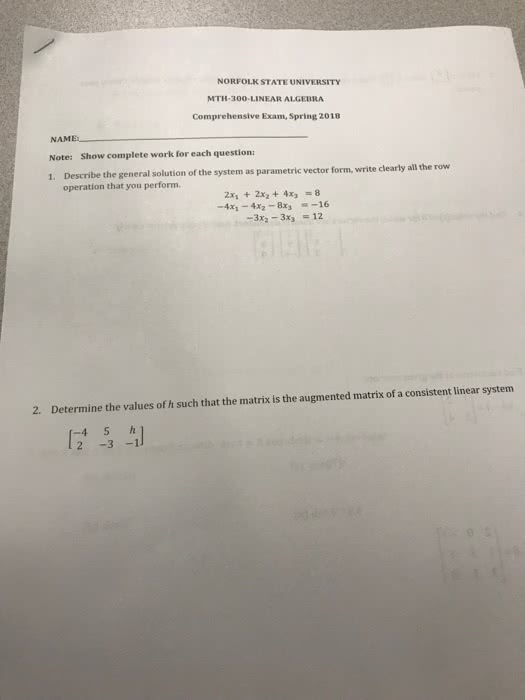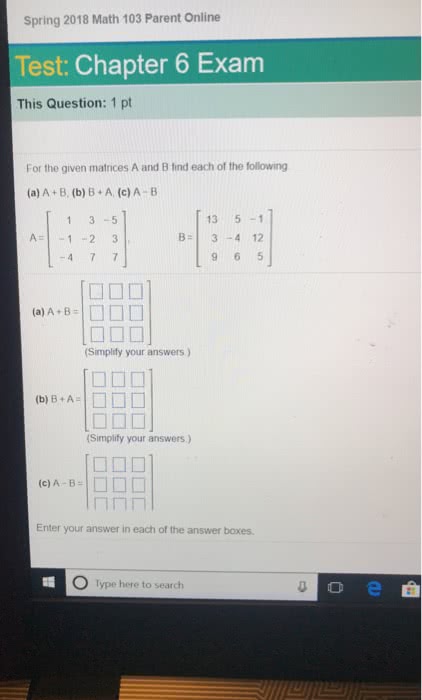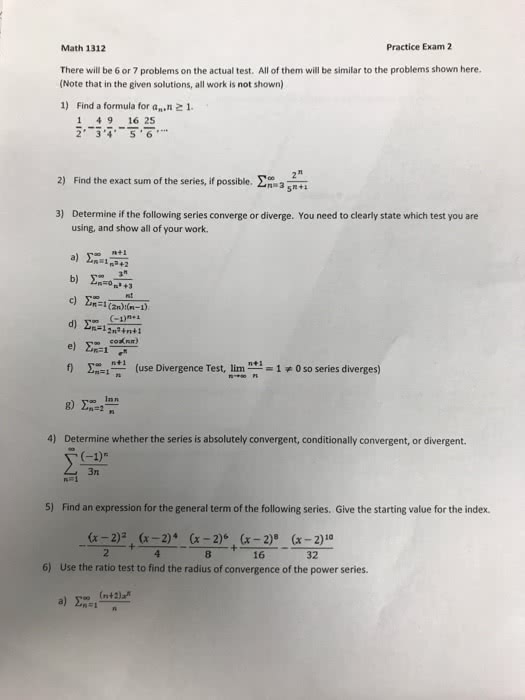MATH 2114 Study Guide - Midterm Guide: Linear Combination, Diagonalizable Matrix, Elementary Matrix
Document Summary
Standard matrices and sum and compositions of transformations. The kernel, range, projection, onto, one-to-one projections, and determinants. To refresh our memories, a single transformation t, is represented by the number of. Now, if we had the following two transformations (t & s): dimensions (m and n): Let"s look at an example with actual terms. S: (cid:1876)(cid:1877)(cid:1878) (cid:1876)+(cid:1878) (cid:1876)+(cid:1877) (cid:1878) (cid:884)(cid:1877)+(cid:889)(cid:1878) (cid:1846)+(cid:1845):[ (cid:1877)(cid:1876)+(cid:885)(cid:1878) (cid:1877) (cid:1878)+(cid:884)(cid:1877)+(cid:889)(cid:1878) ]=[(cid:1877)+(cid:1876)+(cid:1878) (cid:1877)+(cid:1876)+(cid:1878) (cid:1877) (cid:1878)]+[ (cid:1876)+(cid:1878) (cid:1876)+(cid:1877) (cid:1878) (cid:1876)+(cid:885)(cid:1878)+(cid:1876)+(cid:1877) (cid:1878) (cid:884)(cid:1876)+(cid:884)(cid:1878)+(cid:1877) (cid:884)(cid:1877)+(cid:889)(cid:1878)]=[ (cid:885)(cid:1877)+(cid:888)(cid:1878) ] Say you have these two transformations, (first arrow representing t and the second arrow representing s): (cid:3040) . You can write the composition as: (cid:1845) (cid:1846): (cid:3040) . Let"s say we have the two following transformations: (cid:1846):(cid:2870) (cid:2871) (cid:1845):(cid:2871) (cid:2870) In order to write the composition of these two transformations, use the following formula: What the above formula is stating is that, you take your original components and apply the first transformations to get t(x).



